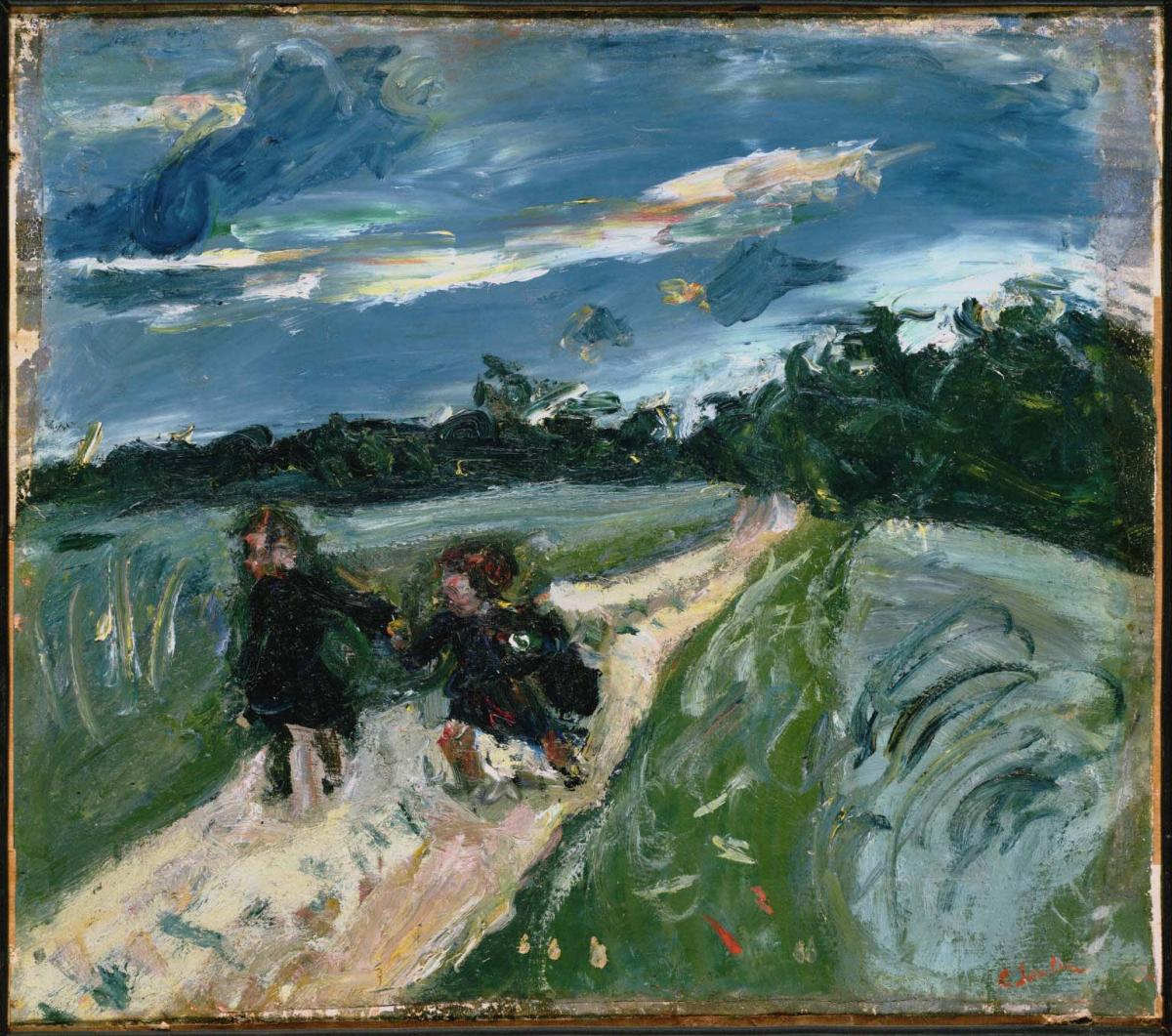Return from School After the Storm
Chaim Soutine ( c. 1939 )

In the summer of 1939, Chaïm Soutine painted scenes in and around the village of Civry-sur-Serein, not far from Auxerre—including Windy Day, Auxerre and Return from School After the Storm. His companion, Gerda Groth, recounts in her memoirs: “The road to L’Isle-sur-Serein was lined with tall poplars … Soutine painted several pictures of that road. One of these is the painting to which the Phillips Gallery … has given the title Windy Day, Auxere, though in fact it shows the road … which he painted under a stormy sky.” The theme and figures of Return from School are almost identical to, but show a telescoped view of, those in Windy Day
.With the onset of the Second World Warin September 1939, Soutine and Groth, as foreigners, were forbidden to leave Civry, although Soutine secured a permit to return to Paris for medical reasons. They went into hiding, living in Paris and surrounding areas, in constant fear of deportation by the Nazis (indeed, Groth was deported to a concentration camp from Paris in the spring of 1940). Letters reveal Soutine’s emotional and physical distress around this time. No substantial proof exists that either Windy Day or Return from School was painted after the couple had gone underground, but the artist’s anxiety seems to be foreshadowed in these scenes, where turbulent forces buffet nature and vulnerable children. According to Groth, Soutine read the newspaper religiously throughout the summer of 1939, “striving to discover between the lines the secret of an impending future full of danger.” In spite of his growing anxiety, he declined an invitation to come to the United States in 1940.
Duncan Phillip’s vision of the late landscapes, such as Return from School, has been borne out by later scholars, including Esti Dunow, who finds that “these children start to symbolize a kind of innocence and cohesion in the face of impending overpowering forces, analogous to Soutine’s own feelings of vulnerability.